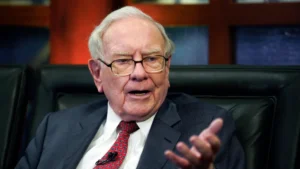Australian federal and state governments are focusing their hydrogen efforts on export projects
Smaller companies are finding ways to make their mark in the hydrogen sector by focusing on small-scale projects
Hydrogen fuel cell powered trucks and buses as well as small-scale green hydrogen facilities are some of ways pursued
Australia has grand ambitions for hydrogen with efforts focused on making the energy store into an export commodity that could one day replace liquefied natural gas.
Back in 2021, the Australian Energy Market Operator (AEMO) outlined five scenarios that could decarbonise the grid by 2035, the most ambitious sketching out ways that Australia could become a ‘Hydrogen Superpower’.
The following year, it spelled out the admittedly ambitious requirements needed to achieve this objective, namely that a near quadrupling of National Energy Market energy consumption would be needed to support an export sector.
In the interest of completeness, that’s a total of 1,278 terawatt hours generated (presumably) using renewable energy by 2050, of which 816TWh will be dedicated to the hydrogen export sector.
While not impossible, it is a very hard ask and one that is looking somewhat insurmountable given what the Clean Energy Council described as an ‘alarming’ slowdown in financial approvals for new solar plants in 2023.
However, it does seem that Australian federal and state government are pushing hard to make this export future a reality.
The Australian Renewable Energy Agency (ARENA) recently announced a $1.67m grant to the Aboriginal Clean Energy Partnership to support Phase 1 of the feasibility study for the East Kimberley Clean Energy and Hydrogen Project and handed Lochard Energy $2m for 18-month feasibility study into large-scale hydrogen production and storage in Victoria’s onshore Otway Basin.
Other much larger awards such as $100m to develop what is claimed to be Australia’s first large-scale hydrogen export facility at Port Bonython, South Australia.
Starting small
Not everyone is impressed by the efforts put in by the government though.
Export projects need large amounts of capital, which in turn tends to limit government grants to projects proposed by major companies, leaving smaller players without the help they sorely need for non-export focused projects.
However, Pure Hydrogen (ASX:PH2) believes there is a way for small companies to make their mark on the hydrogen sector.
Speaking to Stockhead, PH2 managing director Scott Brown confirmed there wasn’t a lot of government support available unless it involved exporting hydrogen.
“PH2 believes we can tackle this with a staged approach by setting up numerous smaller operations proving the technology and pairing with hydrogen appliances and then building to larger projects which can still be used domestically but looking at power generation and helping to build the electrification of networks using a clean & green energy source,” he said.
“The only projects for export will be with green ammonia as this is the only reasonable way to transport this product.”
He added that transporting compressed or liquefied hydrogen was still a long way off and that the demand volumes needed internationally (Asia) for pure hydrogen was not enough to support such efforts.
To advance its staged approach, PH2 will build up hydrogen production and supply in major cities such as Brisbane, Sydney and Melbourne to support back to base trucking as hydrogen fuel cell powered trucks are currently unable to do long haul distances.
Pure Hydrogen’s Taurus HFC prime mover is Australian designed. Pic: Supplied (PH2).
This will build confidence with the community.
“We will then start joining the dots and expanding out from cities to eventually joint them up under our Hub n Spoke model,” Brown added.
Hydrogen synergies
Other initiatives such as Countrywide Hydrogen’s plan to construct “Hydrogen HyWays” is also expected to help deliver this domestic hydrogen ecosystem.
Countrywide Hydrogen – a wholly-owned subsidiary of ReNu Energy (ASX:RNE) – seeks to assess road transport data to identify where heavy vehicles are in greatest use linking regional Australia with ports and major cities.
It will then select sites along these routes where a hydrogen production facility with a refuelling station will be located to give the road transport sector easy access to green hydrogen.
Supporting this goal, Countrywide Hydrogen signed an agreement in December 2023 with Mitsubishi’s DGA Energy Solutions to explore a green hydrogen project in Portland, Victoria.
Stage 1 of the project includes a proposed 10MW electrolyser with production destined for domestic supply to support Countrywide’s goal of decarbonising Australia’s road transport industry and continuing its Hydrogen HyWay rollout.
Countrywide Hydrogen’s Hydrogen HyWays. Pic supplied (RNE)
PH2 believes projects like this will support its efforts as it would mean more hydrogen appliances such as trucks and buses being put into use and could result in having a closer supply of hydrogen to support its power generation arm.
The company itself has been pushing HFC vehicles developed by its 60%-owned subsidiary H-Drive International with three six-month trial commitments, as well as eight firm vehicle orders for delivery this year already in place.
It is also progressing its strategy of developing green hydrogen micro-hubs located close to customers that produce green hydrogen using on-site solar and green electricity to power module-built electrolysers that are delivered to site fully assembled and will offer 24-hour refuelling for hydrogen fuel cell vehicles.
Domestic hydrogen players
While PH2 and RNE are progressing their respective projects, they are certainly not the only companies with concrete ambitions in the domestic hydrogen sector.
Gold Hydrogen is looking to lock in the supply side of the hydrogen equation by tapping into naturally occurring hydrogen, that is underground reservoirs with all the hallmarks of formations that host natural gas and/or oil but are filled with hydrogen created by natural processes instead of fossil fuels.
It has already seen some early success with its Ramsay-1 and Ramsay-2 exploration wells in South Australia already confirmed to have intersected gas with up to 86% hydrogen and up to 17.5% helium – a very high value commodity – in the sample taken from Ramsay-2.
All of the formations tested to date have been found to be permeable and have produced natural hydrogen to surface.
The company is currently preparing to carry out Stage 2 testing that will concentrate on producing from the wells using a down-hole pump or other process while monitoring gas rates at surface.
Hazer is currently running the commercial demonstration plant that uses its technology to produce carbon neutral hydrogen and graphite from a biogas feedstock with initial output starting in January 2024.
The performance testing program is currently running through the first half of this year to validate its commercial readiness with the company noting that early results have been positive with evaluation and test program optimisation ongoing.
Highlighting its potential, the CDP has secured a $9.4m grant from the Australian Renewable Energy Agency.
In Queensland, Lion Energy has secured development approval from the Queensland government’s State Assessment and Referral Agency for its planned green hydrogen generation and refuelling hub in the Port of Brisbane.
The approval allows the project to proceed to the construction phase which LIO expects to start in Q2 2024 with commissioning expected in H2 2024.
The project, which will will have an early focus on supplying hydrogen to domestic public bus fleets, truck fleets, and fuel cell gensets for the construction and mining industry.
Much like PH2 and RNE, LIO is looking to develop a network of hydrogen refuelling depots across eastern Australia with the Port of Brisbane project marking the first, major step in this objective.
At Stockhead we tell it like it is. While Pure Hydrogen is a Stockhead advertiser, it did not sponsor this article.
The post Small-scale domestic hydrogen projects are starting to make waves appeared first on Stockhead.






















